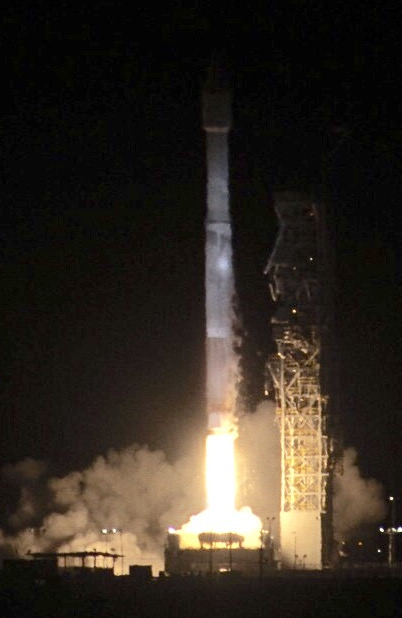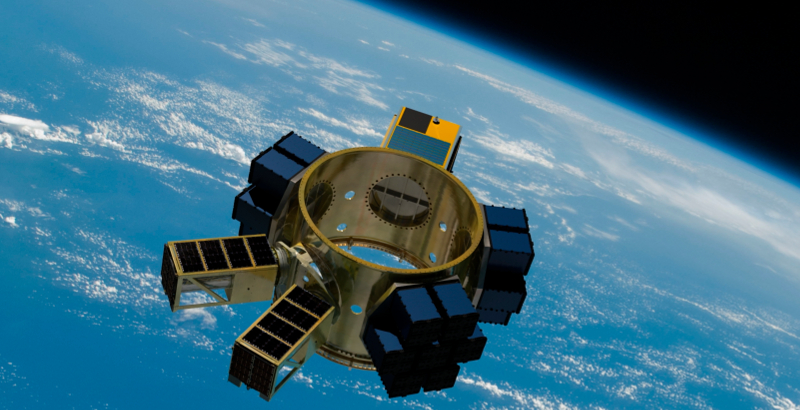Ham radio put another satellite in orbit, the FOX-1A. Not many groups have the long-term hacking credentials of hams. Their tradition extends back to the first days of radio communications, which puts the group well over a century old. This newest satellite launched in the early hours of October 8th and, after deployment, was heard later the same day. Anyone with the ability to listen on the 2m band can hear FOX-1A. T hose licensed as hams will be able to communicate using a 70cm transmitter while listening on 2m.
hose licensed as hams will be able to communicate using a 70cm transmitter while listening on 2m.
This satellite is using the cube-sat format and ‘ride sharing’ through a program offered by NASA and the National Reconnaissance Office (NRO). Twelve other nano-satellites rode along with the FOX-1A. These 10 cm cubes are used for commercial, educational, and non-profit projects. The purpose of today’s satellites covered not only ham radio but educating students in satellite construction, land management by American Indian tribes, and space to ground laser communication. Yeah, what’s cooler than space lasers? Video about the FOX-1A after the break.
We’ve seen some interesting ideas for cube-sats. And if you want to think about the ground portion of a system like this, check out the SatNOGs story — winners of the 2014 Hackaday Prize.

















Great coverage of AMSAT! Just to note, the 3D rendering on this article is of the Fox-1C/D mission (SpaceX Falcon 9 with SHERPA payload) and is not a rendering of what the Fox-1A mission looked like.
Anybody know what it takes to do the ground station? Looks like the software is easy to find (FoxTelem is the name) and runs on W/M/L but I am unsure what the receiver needs? From the page it looks like you feed the software an audio signal (with no filtering applied) and it will pull the subaudible tones out so I assume you will need an external radio tuned in.
Guess I can answer my own question. Found the Usermanual has a section on inputs. You can do either feed demodulated audio or (if your sdr is supported) give it the raw IQ signals. They mention a FUNCube SDR but any of the other RTL-SDR units might work. If I can get my old computer up and going this could be a fun thing to do with it.
More satellites to hack us??, let’s run away! Thanks for sharing that, enjoyed it very much!
Visit my blog, maybe you’ll enjoy it as much as I enjoyed your post! https://thebeautyinspace.wordpress.com
Gonçalo
For those interested in such details, Fox-1A is now officially known as AO-85.
Thanks, Blade. For those unfamiliar with satellite operations this means the satellite is in its proper orbit and operating. The AO stands for AMSAT-OSCAR. AMSAT is the Radio Amateur Satellite Corporation. OSCAR is Orbiting Satellite Carrying Amateur Radio. The 85 means there have been 84 previous AO satellites.
Check your spelling please. You posted a typo there. You mean OSCAR.
“Ham Radio” isn’t an organization. AMSAT put the satellite in orbit for ham operators, most of whom are not part of AMSAT.
Right you are!
It happens that at Maker Faire last month I found both NASA’s booth, and the local HAM offices, (That is the HAM crowd that the Hall of Science forced out) and had a spirited discussion on both satellites and also with regards to the HAM crowd, suitsat.
At the NASA booth they had the grounded version of the cubesat that happened to contain a smartphone and heck of a lot of rechargeable batteries. We spent plenty of time discussing that one……
Fox-1A (AO-85) launch special issue of the AMSAT Journal available for download at: http://www.amsat.org/?p=4591
Lets launch APRS digipeater satellites & high altitude balloons that operate in the 23cm ham band for the uplink frequency. The satellite / ballon downlink frequency would remain on 145.825MHz. This would allow really compact / portable directional and hemispherical antennas to be used for transmitting up to APRS satellite and balloon digipeaters. Imagine being able to walk around while transmitting APRS beacons up to a satellite or ballon and eliminate the need to carry around akward 2m / 70cm directional antennas.
http://forums.qrz.com/index.php?threads/23cm-33cm-geosynchronous-aprs-digipeater-satellite-idea.536671/
73!
KH2SR